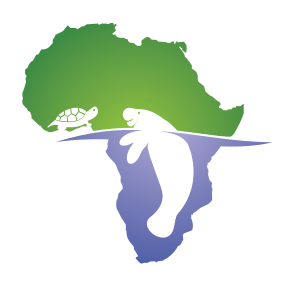Late on Tuesday evening we got a call that a fisherman had found a manatee calf entangled in a fishing net near Tocc Tocc Reserve in Lac de Guiers. He said the calf was able to get to the surface to breathe and that there were other manatees nearby. Since it would take us several hours to get to the site, and working out of a tippy pirougue in the pitch dark seemed a tad risky, we decided to go first thing in the morning. Tomas called the local wildlife officers and they agreed to take us by truck to Toleu. Of course everything happens in “Africa time”, so the truck was late to pick us up, then once we arrived in Toleu everyone had to eat breakfast before work could begin.
The guy who was supposed to go check on the calf at first light hadn’t gone, so I was worried about it as we paddled several miles across the lake to it’s location.
When we got there luckily it was still in the net, able to surface and breathe, and it could move around quite a bit, so it took a few minutes to pull in the net.
It turned out to be a small male calf, I estimate he was about 1 year old and weighed ~40-50kg (we didn’t have a scale). He had fishing net tightly wrapped around his right flipper and neck, but luckily it hadn’t cut into him and he was in good shape.
After getting the calf on board, I took standardized measurements including lengths and girths at various locations. These can be used to compare with other manatees from other places to give us baseline information for the species. This was the first time I used my new GoPro helmet cam to video manatee work (that’s the large thing strapped to my head), so now I have high definition video of the entire rescue. This will be very useful for both training and educational purposes.
The calf had a distinct scar on his tail, plus several notches on the tail margin, which could help identify him if he’s ever seen again in the future. Usually calves don’t have many markings, so this was lucky for us. The tiny orange marks on his side were made by a grease pencil to mark the location of his umbilicus so I could take measurements from his dorsal side. These markings will wash off after a couple days.
This manatee had 4 fingernails on each flipper, a remnant of the long ago days on spent on land by manatee ancestors. You can see the outline of the finger bones inside his flipper. A piece of trivia for you: West African and West Indian manatees have nails on their flippers, but Amazonian manatees have lost them entirely.
Tomas and Niaga pose for one happy shot with the little fellow before he was released.
The moment of release! Definitely a great feeling. Hopefully the other manatees seen nearby will soon reunite with the calf.












